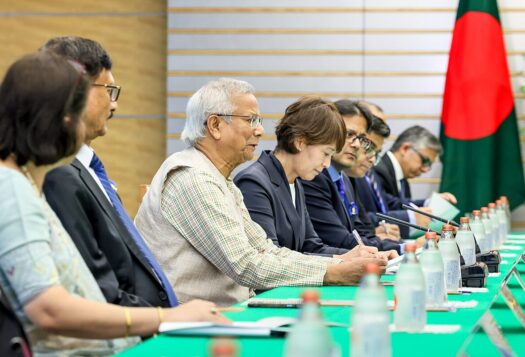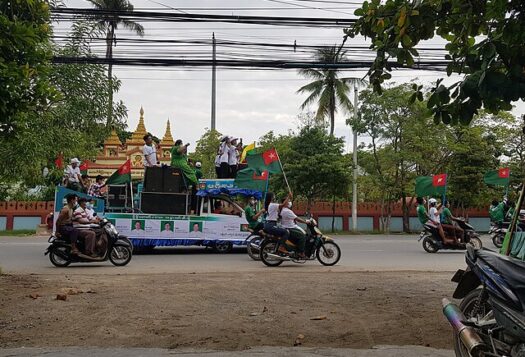
Note: The author is a freelance journalist in Kashmir, who prefers to remain anonymous due to safety concerns.
Kashmir, a longstanding disputed territory between nuclear-armed neighbors India and Pakistan, is precariously positioned within the tumultuous security environment in South Asia. India’s withdrawal of the semi-autonomous status of Kashmir in August 2019 contributed to worsening ties in India-Pakistan relations, which remain tumultuous despite some efforts at re-engagement through back-channel and the restoration of a ceasefire along the Line of Control in February 2021. As a state that has faced frequent tensions and instability, the press is central for capturing insights from the ground. However, within Kashmir, India has sought to put down any kind of resistance with a heavy hand, and this includes its once vibrant press.
The crackdown on the media involves a three-pronged strategy: coercively silencing the local media in Kashmir which largely depended on government advertising for their survival, ensuring benign coverage in the national press with the exceptions of a few independent publications, and finally, targeting freelancers in Kashmir who report for international media with lawsuits or other forms of intimidation. This has been done by implicitly conflating journalism with terrorism, creating a situation where no free press is possible. This has had a chilling effect on the objective sources of information, paving way for the government to push the news of its own choosing to manipulate public opinion. The drastic dilution of news and the self-censorship practiced by the local newspapers are a political bellwether—a microcosm of what is happening in Kashmir as a whole.
The Current State of Media Freedoms in Kashmir
In an interview earlier this year, Lieutenant General D P Pandey, the former Commander of the Srinagar-based Indian Army Corps, drew a curious distinction between the common and the “white-collar terrorists” responsible for radicalization. Noting that while it is “easy to neutralize, kill, isolate [a terrorist]…the aspect of ‘ism’ is much more enduring and remains in society for a long time, and is run by a nexus, a leadership of prominent people of society which drives the numbers towards becoming terrorists.”
The drastic dilution of news and the self-censorship practiced by the local newspapers are a political bellwether—a microcosm of what is happening in Kashmir as a whole.
The term “white-collar terrorist” was in circulation for some time when Lt. General Pandey endorsed it. In recent years, however, the term has involved Kashmiri civil society, with journalists standing out as the most easily identifiable “white-collar terrorists” for the inherently adversarial nature of their work. The play on the definition of “terrorist” and “terrorism” has also cast the net wider. Journalists, along with human rights activists, lawyers, academics, and other associated people can be portrayed as a part of the “ecosystem of narrative terrorism,” and blamed for fomenting discourse through stories that in turn is believed may impel youth to take up arms against the Indian state.
The assumption has enabled the progressive curbing of freedom of expression, including objective reporting and expression on social media. There are several mechanisms for doing this. The most visible have been the coercive measures—police raids, summoning journalists for questioning, and the repeated arrests, release, and re-arrests of journalists most frequently citing the Unlawful Activities (Prevention) Act (UAPA)—an anti-terrorism law—or Kashmir’s Public Safety Act (PSA) which allows for detention for up to two years without a formal charge.
In the past year the government has increasingly targeted freelancers and local portals. Fahad Shah, editor of the online news portal the Kashmir Walla, which attempts a fairer coverage of the situation on the ground, remains imprisoned after repeated arrests, most recently under the PSA. Many journalists deemed anti-government have been restricted from travel through “look-out circulars.” This includes the Pulitzer prize winner Sanna Irshad Mattoo who was recently prevented from flying to Paris to attend an award ceremony. Articles have also been published in local newspapers painting journalists as “terrorist sympathizers” or “white collar terrorists.”
The law—and the broader targeting of Kashmir’s press sector—captures the challenges at targeting misinformation more broadly, where “fake news” can at once be a challenge for governments as well as a blanket term used to justify a crackdown on dissent.
Other measures have been more bureaucratic in nature, including efforts to take greater control of ad revenue and partnerships so that news outlets simply cannot survive without complying with an official narrative. In June 2020, the regional government enacted a new media policy that set up mandatory background checks of newspaper publishers, editors, and key staff before the publication could receive government advertisements. Six months after the new policy began, 34 newspapers had been delisted and advertisements were restricted for 13 publications, notices were also sent to 17 publications for “fake news, plagiarism, or unethical content.” The policy itself justified actions based on countering “fake news” and misinformation, as well as thwarting “anti-social and anti-national elements.” The law—and the broader targeting of Kashmir’s press sector—captures the challenges at targeting misinformation more broadly, where “fake news” can at once be a challenge for governments as well as a blanket term used to justify a crackdown on dissent.
The result of these combined efforts has been the mutation of the content in the local newspapers before the readers’ eyes. Editorials—meant to be focused on commentary and critique—have been progressively watered down until they make no comment at all. The once coveted front pages of publications now largely look alike, filled with the same press releases of the Government’s Public Relations department. The few news stories that are published are preferably taken from agencies so that the newspaper is not directly held responsible for them.
The existing problem with journalism in Kashmir is not about misinformation or disinformation in the conventional sense of the term, but the absence of any information that even remotely challenges the government’s version of events. This, in the words of a local editor who did not want to be identified, has caused “the death of news” in Kashmir.
Information Transformed
These heavy-handed measures have meant that local media has been unable to chronicle the unprecedented situation that arose following the withdrawal of local autonomy in the depth and detail it warranted. This is a loss to history. With individuals arrested for stories that may be over a decade old, newspapers have also removed archives online to escape retribution for past reporting. But that is only one part of the tragedy: along the way, an entire people have been deprived of a voice and their narrative. Their suffering, their grievances, and their aspirations have gone begging for a medium of expression. It is now a one-way discourse, from the government to the people. As one editor put it, who did not wish to be identified due to security concerns, Kashmir has “plunged into an information void.”
This situation, in the words of a freelancer, is the “next level of disinformation” where the government is trying to block the access of people to credible information, where this coercive handling of news is about erasing the memory—even existing narratives and sentiment—and supplanting it with a government version of reality.

This effort is strategic—a clear attempt to undo decades of politics and history in the region and spin a new order in its place. Eroding the press space and filling the void with state-sanctioned narratives is one of many instruments of the state power to change what is seen as a “conflict psyche” to address the prevailing separatism in the region. The people are being supplied with alternative political narrative and history. For example, the Kashmir government no longer observes any holiday on July 13, the date in 1931 when 22 people were killed outside Srinagar’s Central Jail protesting the trial of Abdul Qadeer, an activist fighting the autocratic rule of the then Maharaja Hari Singh. Now, the region has a holiday on Singh’s birthday.
Is this strategy changing the nature of conflict on the ground? It is still too early to determine. New Delhi appears to be banking on the fact that feeding people an official version of reality for an extended period will alter their political outlook. For now, however, it is only hiding rather than obliterating simmering resentment.
The Future State of Affairs
The deteriorating press environment is unlikely to change in the near term. As things stand, it looks unlikely that the BJP is going to lose the 2024 general elections. Kashmir has not held an Assembly election since 2018, and the date of the future Assembly elections and how much of the government would be dominated by the BJP remains uncertain. The redrawing of the electoral constituencies in the Muslim majority region has given more seats to the Hindu majority Jammu division—the BJP’s stronghold—giving the party potentially a strong role in a future government. Even if a Kashmir-based party were to dominate the government, it would be of no use considering it would still be subservient to the Lieutenant Governor.
In the crackdown on the press environment, Kashmir has also lost not only voices of those holding the state accountable but essential chronicles of public history.
The “information void” in Kashmir has also not changed the state’s potential as a flashpoint between India-Pakistan. On the contrary, chances of conflict may have increased following India’s withdrawal of Kashmir’s autonomy: Pakistan sees the move as an illegal annexation of the disputed region that it claims and calls for its reversal for peace in South Asia. India has attempted to control public opinion in Kashmir by making it difficult for the separatist and militant leaders based in Pakistan or Pakistan administered Kashmir to communicate through social media after barring the coverage of their activities in the local press. While the chances of the two countries coming to an understanding on Kashmir look bleaker than ever, a dialogue between the two countries could be hoped to at least relax the current stranglehold on the life and media in Kashmir.
For now, however, India sees controlling the press in Kashmir as a security imperative, something that facilitates its plan to pacify the region unchecked by public scrutiny. At the national level too, barring a few notable exceptions, the media strictly toes government line on the troubled region. Press, as a result, has lost its essential oversight role regarding local governance and actions of security agencies. In the crackdown on the press environment, Kashmir has also lost not only voices of those holding the state accountable but essential chronicles of public history.
***
Image 1: Faisal Khan/NurPhoto via Getty Images
Image 2: RAKESH BAKSHI/AFP via Getty Images


